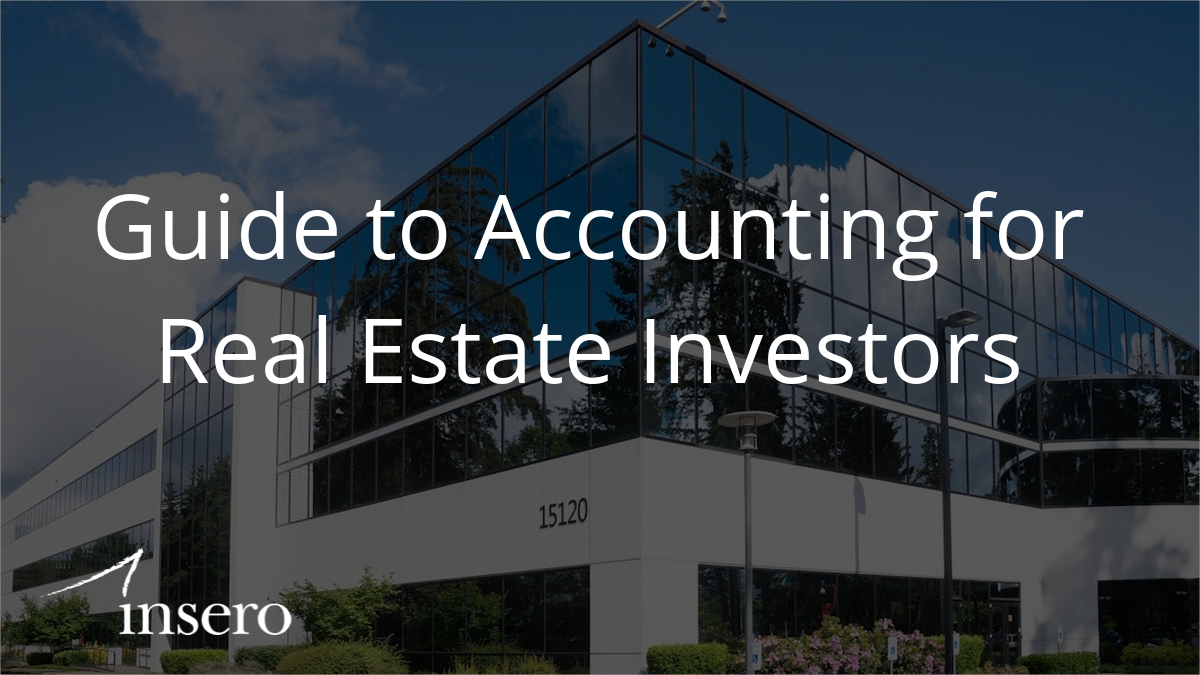ARTICLE | August 19, 2024
Executive summary
Each year, Treasury and the IRS use the Guidance Priority List to identify and prioritize tax issues that should be addressed through regulations, revenue rulings, revenue procedures, notices, and other published administrative guidance. The 2023-2024 Priority Guidance Plan (PGP) year, which ended June 30, contained 10 items under the Exempt Organizations header, only one of which was new.
IRS and Treasury release quarterly updates, identifying the progress made in completing items listed on the PGP and adding any new guidance projects released during the plan year. For exempt organizations, these projects included supporting organization final regulations and donor advised fund (DAF) proposed regulations.
Separately, the IRS identified two new compliance strategies as an area of focus for IRS examinations for exempt organizations: tax-exempt hospitals and tax-exempt collectives using name, image and likeness (NIL) agreements with student athletes.
Supporting organizations: Final regulations
More than seven years after releasing proposed regulations, and 18 years after changes in the law took effect, IRS and Treasury released the final package of regulations affecting section 509(a)(3) supporting organizations. These regulations complement the 2012 final and temporary regulations and the 2015 final regulations addressing the payout requirements for Type III non-functionally integrated (NFI) supporting organizations.
These final regulations, largely adopt the 2016 proposed regulations and finalize guidance on four areas affecting supporting organizations:
1) Defining control Section 509(f)(2) prohibits Type I and Type III supporting organizations from accepting any gift or contribution from any person that directly or indirectly controls the governing body of a supported organization. Adopting the proposed regulations, the final regulations define control as the power to require the supported organization to perform any act that significantly affects its operations or to prevent the governing body of such organization from performing any such act. This control may be exercised alone or by aggregating votes or positions of authority with certain related persons. Caution should be exercised in complex systems where there are tiers of supporting organizations with supported organizations in between.
2) Requiring all Type III supporting organizations to be responsive to each of their supported organizations Consistent with the 2016 proposed regulations, and as intimated in the preamble to the 2012 regulations, the final regulations require Type III supporting organizations to be responsive to all their supported organizations (previously, it was sufficient to meet the responsiveness test with respect to at least one supported organization).
3) Imposing limits on supporting organizations that support governmental supported organizations To qualify as a Type III functionally integrated supporting organization by virtue of supporting governmental units, the final regulations (which generally adopted the proposed regulations with minor modification) require the supporting organization to:
a) Support only one governmental supported organization, unless all governmental supported organizations either operate within the same area or work in close coordination or collaboration with one another; and
b) Ensure that a substantial part of its activities directly further the exempt purposes of at least one governmental supported organization.
Although comments were submitted permitting these supporting organizations to qualify even if they also support organizations other than governmental entities, the IRS and Treasury declined to adopt these comments. Therefore, this test is applicable solely to supporting organizations that support exclusively governmental supported organizations.
4) Modifying the payout requirements for Type III-NFI supporting organizations
a) Unrelated business income tax (UBIT)
Consistent with the 2016 proposed regulations, the final regulations no longer permit Type III-FI supporting organizations to reduce their annual payout requirement by the amount of UBIT paid. Note that the 2023 Form 990, Schedule A, Part V still permits this reduction.
b) Categories of distributions in satisfaction of payout requirement
The final regulations change the non-exclusive list of permissible distributions to an exhaustive list with the following categories: amounts paid to the supported organization in furtherance of exempt purposes; net expenses incurred to carry out an activity of the supported organization; reasonable and necessary administrative expenses; fundraising expenses to the extent of contributions received directly by the supported organization; amounts to acquire an exempt-use asset; set-asides to the extent authorized by the supported organization, approved in advance by the IRS, and actually paid out within 60 months of the set-aside.
Supporting organizations must comply with the final regulations for tax years beginning on or after October 16, 2023.
Donor advised funds: Proposed regulations under section 4966
More than 18 years after Congress added DAFs to the Internal Revenue Code and nearly 7 years after the IRS released the only substantive regulatory guidance on DAFs, the IRS and Treasury released much-anticipated proposed regulations under section 4966. These proposed regulations focus on definitions and taxable distributions but do not address prohibited benefits addressed in section 4967 or the impact, if any, of contributions made by DAFs to publicly-supported public charities. We expect these items to be discussed in later guidance.
As defined by section 4966, DAFs are funds or accounts separately identified by reference to contributions of a donor or donors, owned and controlled by a sponsoring organization, and at least one donor or donor-advisor has, or reasonably expects to have, advisory privileges with respect to the distribution or investment of amounts held in the fund by reason of the donor’s status as a donor. In response to the proposed regulations, the IRS received nearly 200 public comments and held a two-day public hearing. Over 30 speakers delivered oral comments that generally expressed support for the use of DAFs and concern that the regulations go beyond Congressional intent and detrimentally impact DAFs and the charitable sector. Areas of particular interest include the following provisions:
1) Definition of donor advised fund
With the definition set by statute, the proposed regulations seek to clarify the meaning of “separately identified” by suggesting that it is sufficient if the sponsoring organization maintains a formal record of contributions relating to donor or donors. Alternatively, a facts and circumstances analysis may similarly suggest that the account is separately identified because it meets some of the following factors: the balance reflects contributions, gains and losses, dividends, interest, and distributions; it is named after one or more donors; it is referred to as a DAF; donors receive statements from the organization; and the organization generally solicits advice before making distributions. Commenters note that this definition is overbroad and will capture accounts not currently treated as or intended to be DAFs.
2) Retroactive effective date
The proposed regulations provide that the regulations would apply to tax years ending after the date final regulations are published, generally subjecting taxpayers to application of these rules for a period during which they were unaware they would apply. The recommendation is to have the regulations apply to periods beginning after the date of publication at minimum, with a preference for there to be a transition period between the date of publication and the effective date of the rules.
3) Personal investment advisors
The proposed regulations define a donor-advisor to include an investment advisor that manages or provides investment advice with respect to both assets maintained in a DAF and the personal assets of a donor to the DAF. This definition would then preclude the DAF from paying the investment advisor for the investment services rendered. The proposed regulations would not treat personal investment advisors as donor-advisors if they provide investment advice to the sponsoring organization of the DAF as a whole. The recommendations generally suggested eliminating this definition noting, in particular, that smaller sponsoring organizations would be harmed because they often do not have full-time investment advisors employed.
4) Definition of taxable distribution
The proposed regulations opt for a broad definition of distribution to include any grant, payment, disbursement or transfer, whether in cash or in kind in contrast to the request from prior comments that the definition be limited exclusively to gratuitous transfers. As a result of this all-encompassing definition, the proposed regulations would preclude DAFs from making distributions to organizations engaged in permissible lobbying unless the grant terms specifically excluded the use of such funds for lobbying. Commenters noted that this definition, along with other provisions of the proposed regulations, seem to be importing private foundation rules onto DAFs where Congress had no intent to do so.
5) Exceptions to defined terms
Although the proposed regulations contain numerous exceptions to the general definitions, including who constitutes a donor and what constitutes a DAF, they are narrowly drawn (e.g., advisory privileges for scholarship programs established by section 501(c)(4) organizations), which will give them limited impact and result in an over-application of the DAF rules to accounts that are not intended to be DAFs.
Although the official period to provide comments is closed, IRS and Treasury officials always note that if taxpayers have comments, they should submit them through regulations.gov, and they will be reviewed and considered.
Given the sector’s negative and vocal response to the proposed regulations, and particularly in light of the U.S. Supreme Court’s recent decision in Loper Bright Enterprises v. Raimondo, it is unclear where the IRS and Treasury will go from here. Typically, we expect the government to issue final regulations after proposing them. However, the IRS and Treasury may need to significantly rework the proposed provisions, both to account for their practical application for organizations administering DAFs as well as with the understanding that interpretive regulations may be subject to greater scrutiny by the courts due to Loper. As a result, we may see another set of proposed regulations before Treasury and IRS promulgate final regulations.
New exempt organization compliance strategies
The IRS recently added two significant compliance strategies to its compliance programs and priorities, which it outlined in its 2024 Program Letter and updates throughout the year on its website:
1) Tax-exempt hospitals
A new IRS examination strategy will focus on tax-exempt hospitals and specifically how these entities meet the section 501(c)(3) community benefit standard and the requirements set forth in section 501(r) (including community health needs assessments, financial assistance policies, limitations on charges, and billing and collection policies). Of particular interest is the community benefit standard, which has no bright-line criteria and has largely evolved from IRS rulings in the 1960s.
2) Name, image, and likeness (NIL) collectives
Another new IRS examination strategy focuses on ensuring that NIL collectives that obtained section 501(c)(3) exempt status. The exams will evaluate whether the organizations appropriately disclosed their activities in their application for exempt status, and that those activities support the legal requirements for exemption. This strategy follows GLAM 2023-004, where IRS attorneys questioned whether such organizations meet the requirements for exemption under section 501(c)(3). Also of interest is the fact that during 2024, the IRS has released at least four denial letters related to organizations that applied for exempt status as NIL collectives.
RSM US takeaways
Although the sector continues to wait for other long-promised guidance, including the remaining DAF rules, issues associated with co-investing between private foundations and their disqualified persons, and allocations of dual use expenses, among others, it is positive to see IRS and Treasury make progress on their priorities and initiatives. In addition, RSM can assist supporting organizations and sponsoring organizations of DAFs with identifying and implementing any necessary changes to comply with the new or proposed rules.
Let’s Talk
Fill out the form below and we’ll get back to you to discuss your specific situation.
This article was written by Alexandra O. Mitchell, Morgan Souza, Lauren Nowakowski and originally appeared on 2024-08-19. Reprinted with permission from RSM US LLP.
© 2024 RSM US LLP. All rights reserved. https://rsmus.com/insights/tax-alerts/2024/treasury-and-irs-achievements-and-priorities-for-exempt-organizaions.html
RSM US LLP is a limited liability partnership and the U.S. member firm of RSM International, a global network of independent assurance, tax and consulting firms. The member firms of RSM International collaborate to provide services to global clients, but are separate and distinct legal entities that cannot obligate each other. Each member firm is responsible only for its own acts and omissions, and not those of any other party. Visit rsmus.com/about for more information regarding RSM US LLP and RSM International.
The information contained herein is general in nature and based on authorities that are subject to change. RSM US LLP guarantees neither the accuracy nor completeness of any information and is not responsible for any errors or omissions, or for results obtained by others as a result of reliance upon such information. RSM US LLP assumes no obligation to inform the reader of any changes in tax laws or other factors that could affect information contained herein. This publication does not, and is not intended to, provide legal, tax or accounting advice, and readers should consult their tax advisors concerning the application of tax laws to their particular situations. This analysis is not tax advice and is not intended or written to be used, and cannot be used, for purposes of avoiding tax penalties that may be imposed on any taxpayer.




